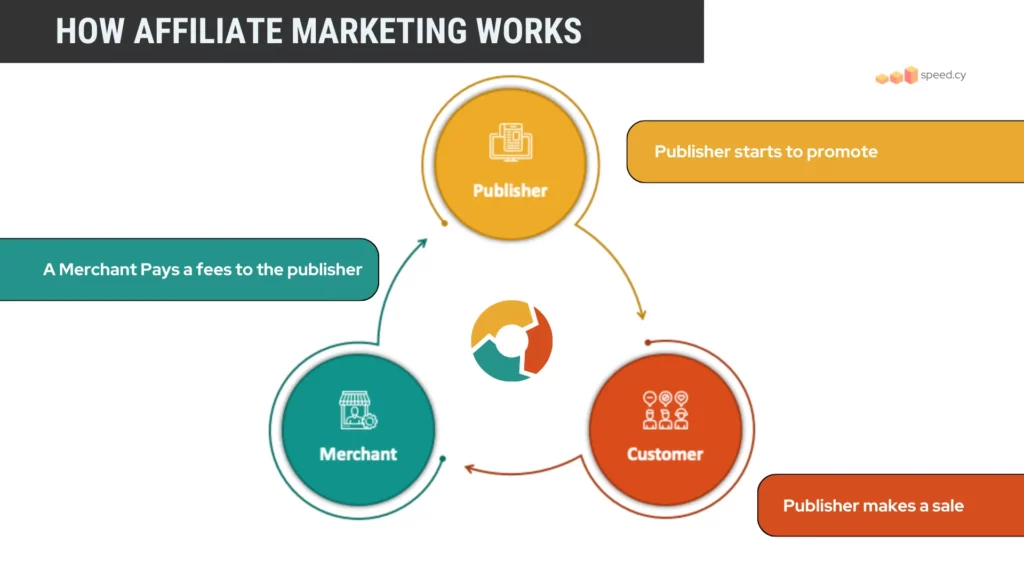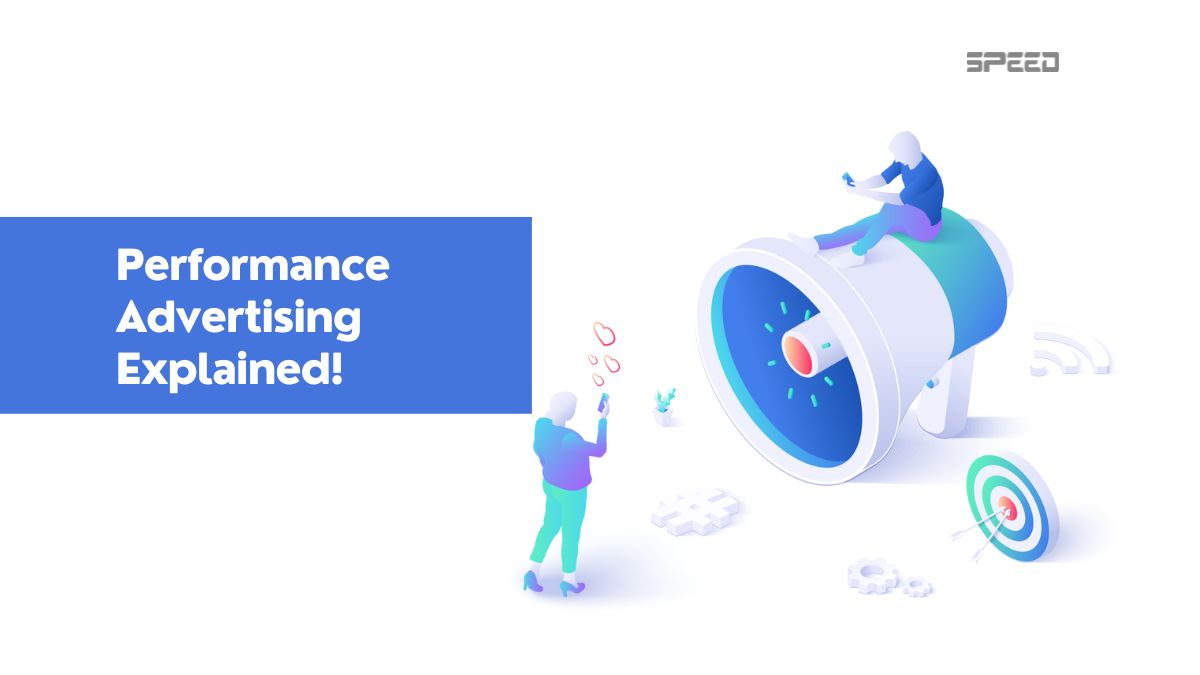Performance advertising is quickly becoming one of the most effective digital marketing channels for businesses looking to drive measurable results and return on ad spend. But what exactly is performance advertising, and how does it work?
Performance advertising refers to any paid digital marketing formats where advertisers only pay when users take a specific “performance” action, like clicking on an ad, signing up on a landing page, or making an online purchase. This pay-for-performance model differs from traditional advertising, where brands pay based on impressions or views regardless of outcome.
With performance advertising, marketers have far greater transparency into the direct return generated by campaigns. Tracking clear conversion metrics like cost-per-lead and return on ad spend enables highly targeted efforts aimed at acquiring customers cost-efficiently.
Major forms of performance advertising include search engine marketing, social media advertising, affiliate marketing, referral marketing and more. The strategies may differ, but the core benefit remains clear ROI based on concrete user actions tied to organizational goals.
In this comprehensive guide, we will explore the essentials of performance advertising, including:
- Common types and advertising formats
- Key strategies for success
- Benefits over traditional advertising
- Metrics and analysis best practices
- Challenges to consider
Understanding performance advertising allows marketers to tap into one of today’s most accountable and results-driven forms of digital marketing. The ability to track conversions and optimize efforts based on hard data helps fuel better decision making.

Whether just starting out or looking to improve existing efforts, this guide will equip you with insights to unlock the full potential of performance advertising. Let’s dive in and explore what makes it a critical marketing channel for driving measurable business results.
The Many Types of Performance Advertising
With a clearer picture of what performance advertising entails, let’s explore some of the major formats and advertising types that fall under this high-ROI digital marketing umbrella.
1. Search Engine Marketing – Driving Traffic from Google
One of the largest categories of performance advertising is search engine marketing (SEM). This refers to ads shown in search engine results pages, namely Google Ads (formerly known as Google AdWords).
Advertisers bid on keywords relevant to their business to trigger text, image, or video ads when people search for those terms. You pay only when searchers click your ad, making this a purely pay-for-performance model.
SEM enables you to target people actively looking for your products or services. Tactics like hyper-targeted keywords, location-based ads, and remarketing help drive conversions cost-effectively. No wonder 81% of marketers say SEM is a core strategy for businesses, beacause it delivers excellent ROI (Source).
SEM works seamlessly alongside organic search optimization (SEO) efforts. SEO improves your natural rankings, while SEM instantly places you in front of motivated searchers – fast.
👉 Pro Tip: Focus on long tail, low competition keywords with exact match SEM campaigns to find interested searchers while keeping costs down.
2. Social Media Advertising – Leverage Facebook, Instagram, & More
After search, social media advertising is a mammoth performance channel. Platforms like Facebook, Instagram, LinkedIn, and Pinterest all offer self-serve ad platforms.
Social ads help you get your brand and offers in front of hyper-targeted audiences. You can define audiences by demographics, interests, behaviors and more.
Ads come in a variety of formats – images, carousels, videos, and stories. And you only pay when users view, click, or engage with your ads in some way. The ability to test different creatives and messages cost-efficiently makes social advertising nimble.
What about you? What social platforms have you used for advertising? Share your experiences in the comments!
3. Affiliate Marketing
- How it works: Affiliates (publishers) promote a merchant’s product or service by placing unique affiliate links on their websites, blogs, or social media. They earn a commission for each sale or lead that comes through their links.
- Example: A beauty blogger writes a review about a new skincare product and includes their affiliate link within the post.
4. Native Advertising
- How it works: Native ads blend seamlessly with the surrounding content on a website or platform. They are designed to look and feel like organic content rather than blatant advertisements.
- Example: A sponsored article about healthy eating habits appearing within the lifestyle section of a news website.
5. Display Advertising
- How it works: Advertisers use banner ads, rich media ads (including video or interactive elements), and other visual formats across a network of websites. Payment models can vary (PPC, CPM, etc.).
- Example: An ad for a new running shoe appearing on a sports blog.
Crafting a Winning Performance Advertising Strategy

Now that we’ve covered the major types of performance advertising, let’s discuss how to develop an effective, ROI-driven strategy. Follow these best practices when planning and executing your campaigns:
Step 1: Conduct Audience Research to Refine Targeting
Who are your ideal customers? What messages resonate with them? Spend time understanding your audiences’ demographics, interests, and motivations through surveys, analytics, and customer profiles. These insights allow you to fine-tune ad targeting and creative.
Step 2: Set Clear Goals and Key Performance Indicators (KPIs)
Define the outcomes you want to achieve from the start. Common goals include leads, conversions, customer acquisitions, engagement. Choose specific KPIs to benchmark and optimize towards like cost-per-click, cost-per-lead, return on ad spend, etc.
Step 3: Test Different Performance Advertising Channels
Assess whether search, social, referral, or affiliate marketing makes the most sense for your goals. Many brands find a combination of channels and ad formats is most effective. Don’t put all your eggs in one basket early on.
Step 4: Create Relevant Ads Optimized for Each Platform
Tailor your ads’ style, copy, keywords, and placements for each channel. A text-based Google search ad should differ from an Instagram Story ad, for example. Adapt creatives for the unique format.
Step 5: Relentlessly Analyze Performance and Optimization Opportunities
Use analytics platforms to identify your best-performing ads, placements, landing pages, keywords, and more. Double down on what works and cut what doesn’t. Continual testing and refinement is key for performance advertising success.
This strategic approach will set your brand up to maximize results from performance advertising efforts. Don’t forget to track analytics closely to capitalize on key learnings.
Why Performance Advertising Delivers Real Value for Brands
What makes performance advertising stand out from other forms of digital marketing? Here are some of the core advantages driving its popularity:
Becasue it Provides Complete Transparency into Your Ad Spend
With performance advertising, you only pay when a visitor takes a specified action. There’s no wasted spend on broad impressions or vanity metrics. You have full visibility into the exact ROI generated, making it easy to calculate average cost-per-conversion.
This transparency allows you to optimize campaigns for maximum profitability. Each dollar goes towards driving real bottom-line results.
Because it is a Low Risk Model Means Greater Experimentation
Because you’re not locked into upfront contracts or massive budgets, performance advertising enables greater flexibility to test new keywords, creatives, audiences and platforms.
You can launch several small, agile campaigns simultaneously, see what resonates, then double down on the highest converting elements. This fail fast, optimize approach lets you cost-efficiently determine the best strategies.
And Data-Driven Insights Fuel Better Decision Making
Robust analytics and attribution modeling give you hard data on which ad variations, placements, landing pages, offers and more drive the most conversions.
These learnings allow you to tweak messaging, target customer segments, and improve creative in an informed, results-driven way. It takes the guesswork out by showing you what actually works.
In summary, performance advertising provides unparalleled transparency into your digital marketing effectiveness. It’s an highly accountable method for achieving measurable ROI.
Next, we’ll explore some common challenges and best practices to overcome them when activating performance advertising campaigns.
Overcoming Common Performance Advertising Challenges
While performance advertising offers many advantages, it also comes with some unique challenges for marketers to navigate. Let’s go over some of the top issues that arise and proven tips to tackle them head-on:
Maintaining Brand Safety and Data Privacy
A big potential downside is lack of control over where your ads appear and how your customer data is handled. Unlike direct ad buys, performance platforms use algorithmic placement and third-party data which can put your brand at risk.
“Here’s how to keep tight guardrails in place:
- Leverage keyword blocking and exclusion lists
- Use whitelists of pre-approved sites or placements
- Limit data sharing and enforce contractual privacy protections
- Closely monitor where your ads run to identify any unsavory placements”
Combating Fraud and Maximizing Legitimate Conversions
Unfortunately, performance advertising is susceptible to bots, click spam, and other fraudulent behavior that eats your ad budget. It pays to be vigilant.
“Tactics to detect and prevent fraud: source traffic carefully – analyzeHeaders.com – link to relevant post”
- Use anti-fraud monitoring tools
- Block suspicious IP ranges
- Favor more secure channels like Google Ads
- Focus on driving phone, in-store or email leads vs just clicks
Overcoming the Technical Learning Curve
Make no mistake – performance advertising requires hands-on management and constant optimization. The platforms have steep learning curves. Brands must invest in developing in-house expertise through testing, certifications, and training.
Or lean on an experienced digital agency to navigate the technical complexities on your behalf so you can focus on strategy and creative. With the right expertise, you can execute performance advertising campaigns confidently and successfully.
Let’s wrap up with a quick look at overarching best practices for this high-impact digital marketing channel.
Key Best Practices for Performance Advertising Excellence
Ready to activate performance advertising that converts? Keep these proven tips top of mind:
Hook viewers with hyper-targeted messaging
Laser focus your ad copy, offers, and creatives to resonate with specific user intents and interests. For example, target searchers looking for “women’s running shoes under $100” or Facebook users who love marathon training pages.
Retarget engaged visitors
Create customized remarketing campaigns for those who’ve previously visited your site or interacted with ads. They’re hot leads – keep your brand top of mind.
Test multi-channel campaigns
Run coordinated ads across search, social, referral sites and affiliate networks. Track cross-channel effectiveness to optimize the buyer journey.
Prioritize landing page optimization
Ensure your landing pages match ad messaging and rapidly guide visitors to convert. Clear call-to-actions, trust elements and minimal distractions are key.
Monitor and tweak campaigns relentlessly
Dig into analytics to identify high-performing elements then further optimize. Continual refinement based on data drives results.
With the right goals, audience insights, and measurement discipline, performance advertising offers a world of potential. Now you’re equipped with a comprehensive overview to unlock its full ROI power.
Remember to track performance closely, stay nimble, and keep honing your approach. The brands seeing massive returns from performance advertising double down on what works while eliminating low-value activities.
To recap, align your efforts to core business objectives, embrace relentless optimization, choose your channels wisely, and focus on delighting customers – not just chasing clicks. With this performance mindset, you’ll be primed for long-term success.





